Table of Content
I. Introduction
Nestled amidst the breathtaking glens and towering peaks of Scotland, Clan Lamont stands as a testament to the enduring spirit of the Highlands. With a rich tapestry of history woven through its very fabric, the clan has left an indelible mark on the annals of Scottish lore. The Lamonts are known for their fierce loyalty and their strong sense of tradition. They have also been involved in some of the most important events in Scottish history, including the Battle of Culloden.
Today, Clan Lamont remains a vibrant and close-knit community bound together by a shared heritage and an unyielding sense of identity. With a strong emphasis on tradition and a deep respect for their ancestors, the clan continues to perpetuate its proud lineage, ensuring that the spirit of Clan Lamont will forever endure.
A. A Brief Overview of Clan Lamont
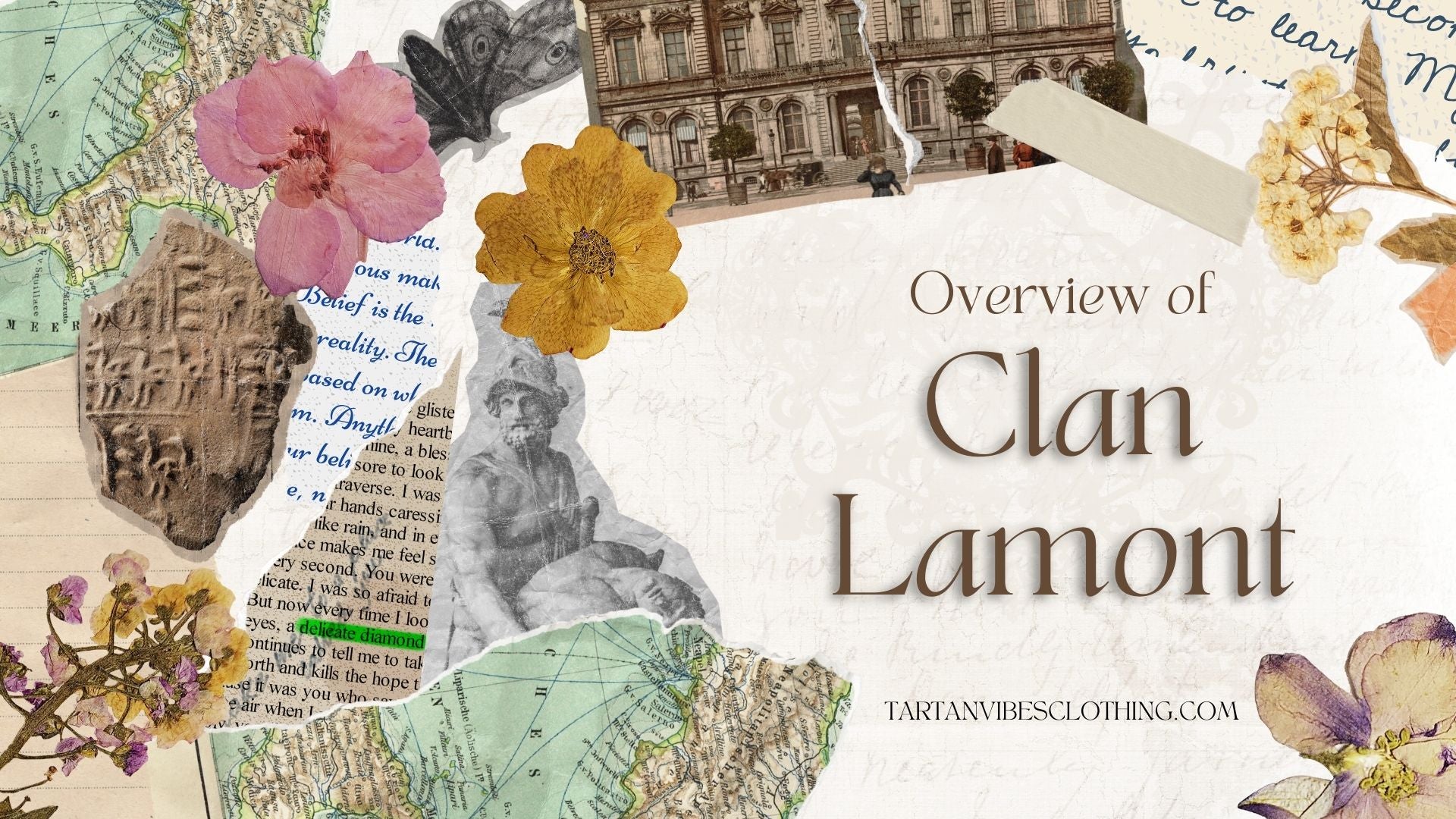
Lamont Clan, a Highland Scottish clan, is believed to have originated from Ánrothán Ua Néill, an Irish prince of the O'Neill dynasty, and ultimately from Niall Noigíallach, the High King of Ireland. Established in 1895, the Clan Lamont Society was created to cultivate global friendships and safeguard and advance the documented history of the Clan Lamont. Other clans such as Clan Ewen of Otter, Clan MacNeil of Barra, Clan Lachlan, and Clan Sweeney also trace their lineage back to Ánrothán. Consequently, traditional genealogy includes Clan Lamont as a descendant of Conn Cétchathach.
For centuries, Clan Lamont held sway over most of the Cowal Peninsula in Argyll. However, their reputation suffered a significant blow during the Dunoon Massacre in 1646, where Campbell clansmen killed approximately 200 members of Clan Lamont. Following this tragic event, many Lamonts relocated, particularly to the Scottish Lowlands. Lamont's descendants can be found across various countries, including Canada, Australia, Britain, and elsewhere.
B. The original name of Clan Lamont
Around 500 AD, the Irish kingdom of Dal Riata migrated from Ulster to the southwest of Scotland. According to oral tradition, Erc's three sons, who were the King of Dal Riata, led this incursion into Scottish lands. This period marked the establishment of the Scottish Kingdom of Dalriada, during which the Gaels brought the Stone of Destiny and the Coronation Stone into Argyll. Later, the Coronation Stone was taken to Scone, the capital of the Southern Picts, where in 844, the Picts and Scots were unified under Kenneth MacAlpine's leadership.
An Irish prince named Anrothan O'Neill, belonging to the O'Neill dynasty took advantage of the new Scottish territory and gave up his leadership in Ireland to establish himself in Argyll. Aodha Alainn O'Neill, a distinguished lord from Anrothan's family, had three sons: Gillachrist, Neill, and Dunslebhe. Lachlan, the son of Gillachrist, established Clan MacLachlan, while Neill founded Clan MacNeil of Barra. Dunslebhe's two sons, Ewen and Fearchar, saw Ewen founding Clan Ewen of Otter and Fearchar's grandson, establishing Clan Lamont.
Until the 13th century, Clan Lamont bore the name MacKerracher in honor of Fearchar. However, in 1235, Sir Laumon issued a charter granting lands to Paisley Abbey. The modern name Lamont derives from Laumon, leading to the clan being known as such. The early chiefs of the clan, descendants of Laumon, were referred to as "The Great MacLamont of all Cowal" (Scottish Gaelic: Mac Laomain mor Chomhail uile).
II. Clan Lamont History
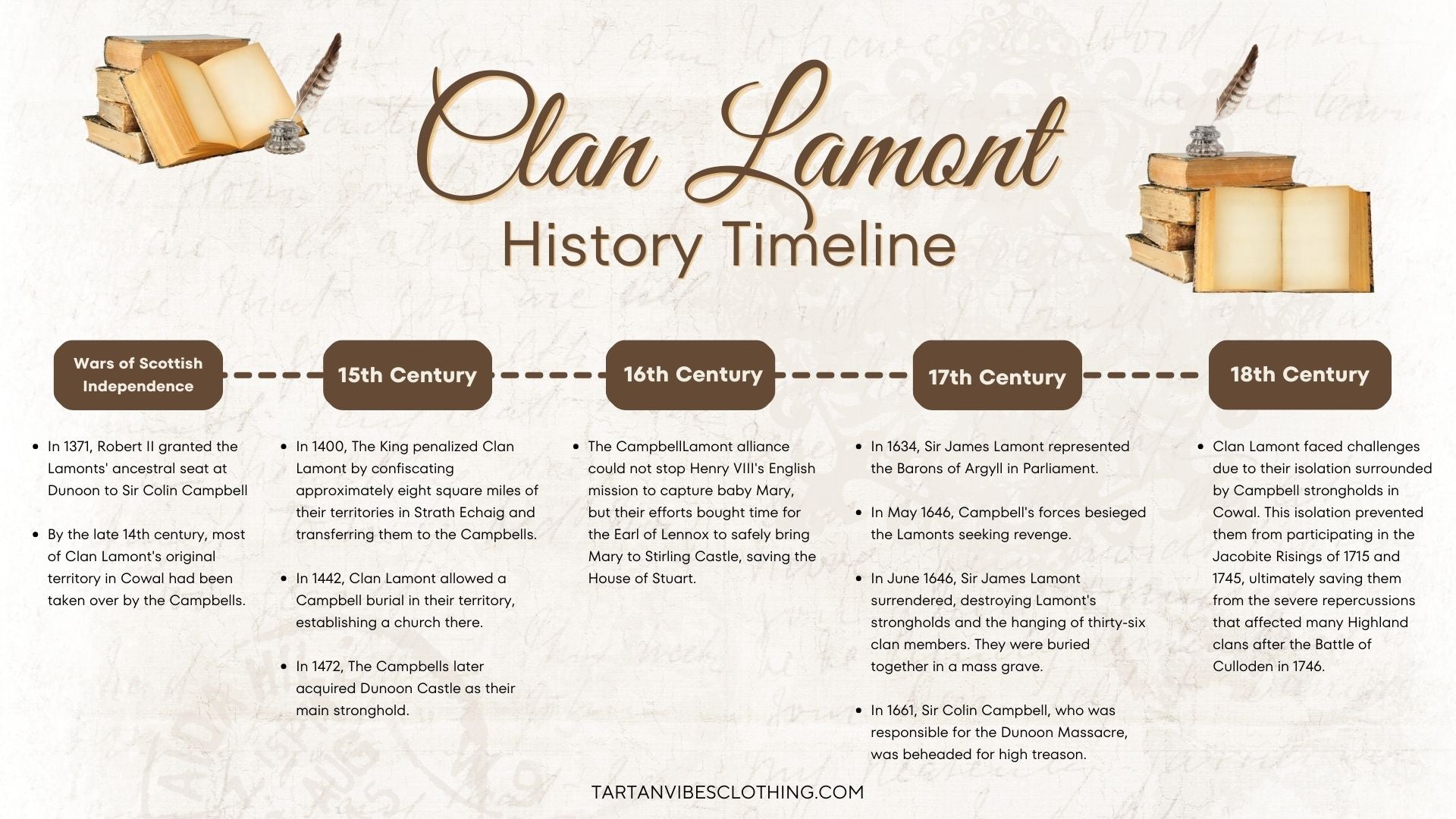
A. Wars of Scottish Independence
During the conflicts of the Wars of Scottish Independence, Sir John Lamont, the grandson of Laumons and the Chief of the clan, supported the MacDougalls of Lorne in opposition to Robert the Bruce. The MacDougall's claim to the throne was unsuccessful, leading to hardships for the Lamonts and their allies. Once Robert the Bruce firmly established himself as King, he sought retribution against the clans that had opposed him. In 1371, Robert II granted the Lamonts' ancestral seat at Dunoon to Sir Colin Campbell, known as the Black Knight of Loch Awe, a supporter of Bruce.
By the late 14th century, most of Clan Lamont's original territory in Cowal had been taken over by the Campbells. Despite significant intermarriage between the Campbell and Lamont clans, tensions between their members remained intense and bitter.
B. In the 15th century

In 1400, while King Robert II was away from Rothesay Castle, three courtiers trespassed into Cowal for hunting. They attacked three Lamont women. The Lamont clansmen retaliated by killing the courtiers. Subsequently, the King penalized Clan Lamont by confiscating approximately eight square miles of their territories in Strath Echaig and transferring them to the Campbells. Losing Lamont's lands strengthened Clan Campbell, allowing them to dominate Argyll, especially Cowal. In 1442, Clan Lamont allowed a Campbell burial in their territory, establishing a church there. The Campbells later acquired Dunoon Castle in 1472 as their main stronghold.
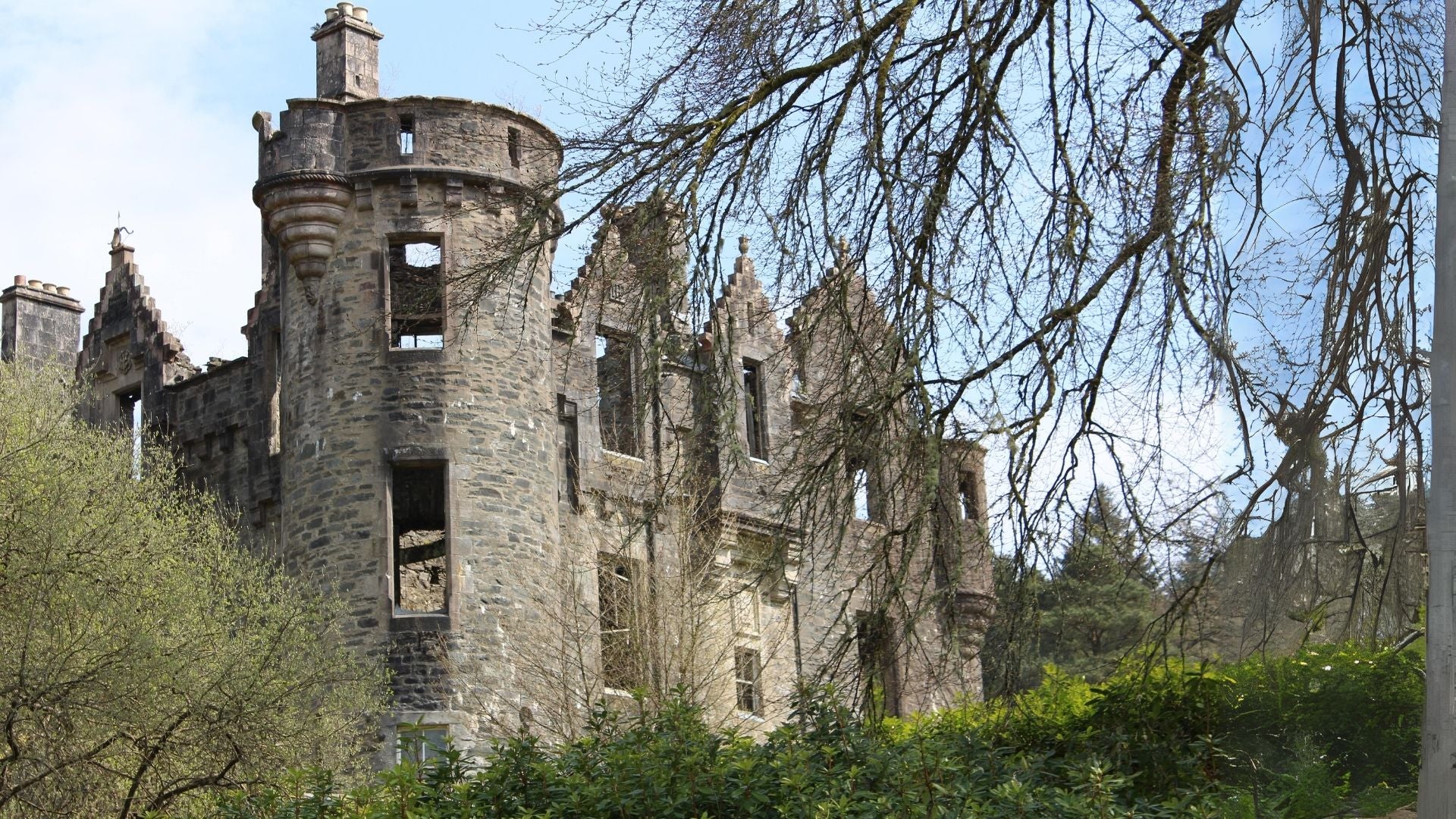
C. In the 16th century
In 1544, despite the intense competition between Clan Campbell and Clan Lamont, they joined forces in an unsuccessful attempt to thwart an English expedition sailing through the Firth of Clyde towards Scotland. The Campbell-Lamont alliance did not halt the English mission, led by Henry VIII, to seize the infant Mary, Queen of Scots, to marry his successor. However, their resistance did buy enough time for the Earl of Lennox to safely escort Mary to Stirling Castle, thus preserving the House of Stuart.
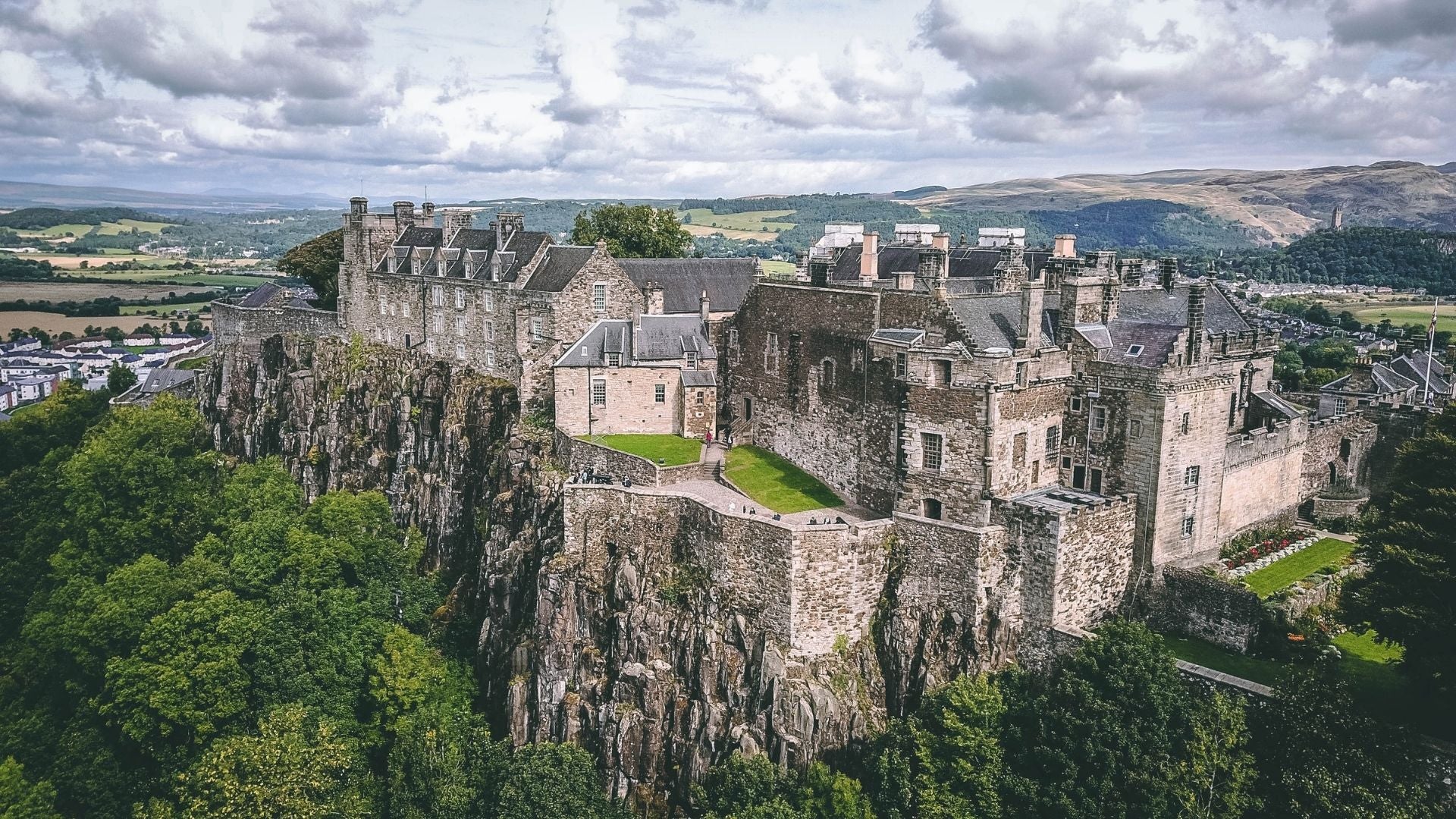
D. In the 17th century
MacGregor hospitality
In the backdrop of Highland customs and gallantry, a tale involving Clan Lamont and Clan Gregor unfolds around 1600. The young heir of Clan Lamont and the sole son of MacGregor of Glenstrae, Chief of Clan Gregor, ventured out for a hunt along the shores of Loch Awe. As night fell and camp was set, a dispute arose between them, leading to Lamont fatally injuring MacGregor in the heat of the moment. Fleeing from MacGregor's enraged followers, Lamont found refuge at the house of the Chief he had harmed.
Despite realizing the truth about his son's demise, MacGregor, bound by Highland principles of hospitality, offered protection to Lamont that night, ensuring his safety even when faced with vengeful clansmen. In the dark hours, Lamont was discreetly escorted to Dunderave on Loch Fyne by the Chief, who provided him with a boat and urged him to escape, advising him to save himself as they would come after him in their territory.
Many years later, an impoverished figure arrived at Castle Toward seeking asylum—it was MacGregor of Glenstrae, ousted of his lands and possessions by the Campbells, fleeing for his life. Remembering the noble act of protection extended by MacGregor in the past, the Lamont chief welcomed him, offering shelter and sustenance. MacGregor lived alongside Lamont until his passing, and he was honored with a burial at the St. Mary Chapel graveyard on the Toward-an-Uilt farm.
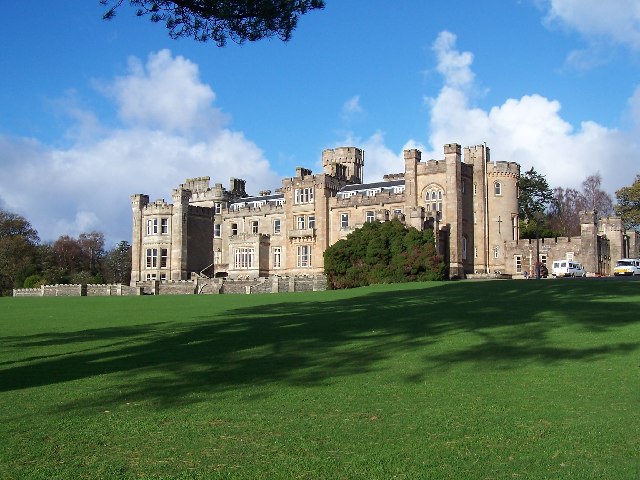
Wars of the Three Kingdoms and the Dunoon Massacre
The most challenging period for Clan Lamont occurred in the mid-17th century, during the tumultuous Covenanter Wars and the Wars of the Three Kingdoms. These conflicts posed a significant threat to Scotland's unity, with Clan Lamont initially joining forces with the Campbells but ultimately becoming involved in the tragic event known today as the Dunoon Massacre. During this period, Sir James Lamont of that Ilk served as the clan's leader. In 1634, he acted as the representative for the Barons of Argyll in Parliament.
However, two years later, he was found to be conspiring for the royalist side, along with other clan chiefs such as Macdonald of Sleat, Macleod of Dunvegan, Maclean of Duart, Stuart of Bute, and Stewart of Ardgowan. When the Marquess of Argyll, the Chief of Clan Campbell, discovered Lamont's involvement, he demanded Lamont retract his support. After various conflicts, including brutal actions against the Campbells, Sir James Lamont pillaged the territory of Strachur, causing the deaths of thirty-three individuals, including men, women, and children. His troops also decimated a significant number of crops and stole 340 cattle and horses.
In May 1646, the Lamonts were besieged by Campbell forces seeking revenge. Sir James Lamont surrendered in June, leading to the destruction of Lamont's strongholds. Sir James and his immediate family were transported to Inveraray Castle, where he was imprisoned in the dungeons of Dunstaffnage Castle for five years. During his time at Inveraray, Sir James was compelled to transfer all Lamont lands to Clan Campbell. Approximately a hundred Lamonts were condemned to death and executed in the churchyard at Dunoon.
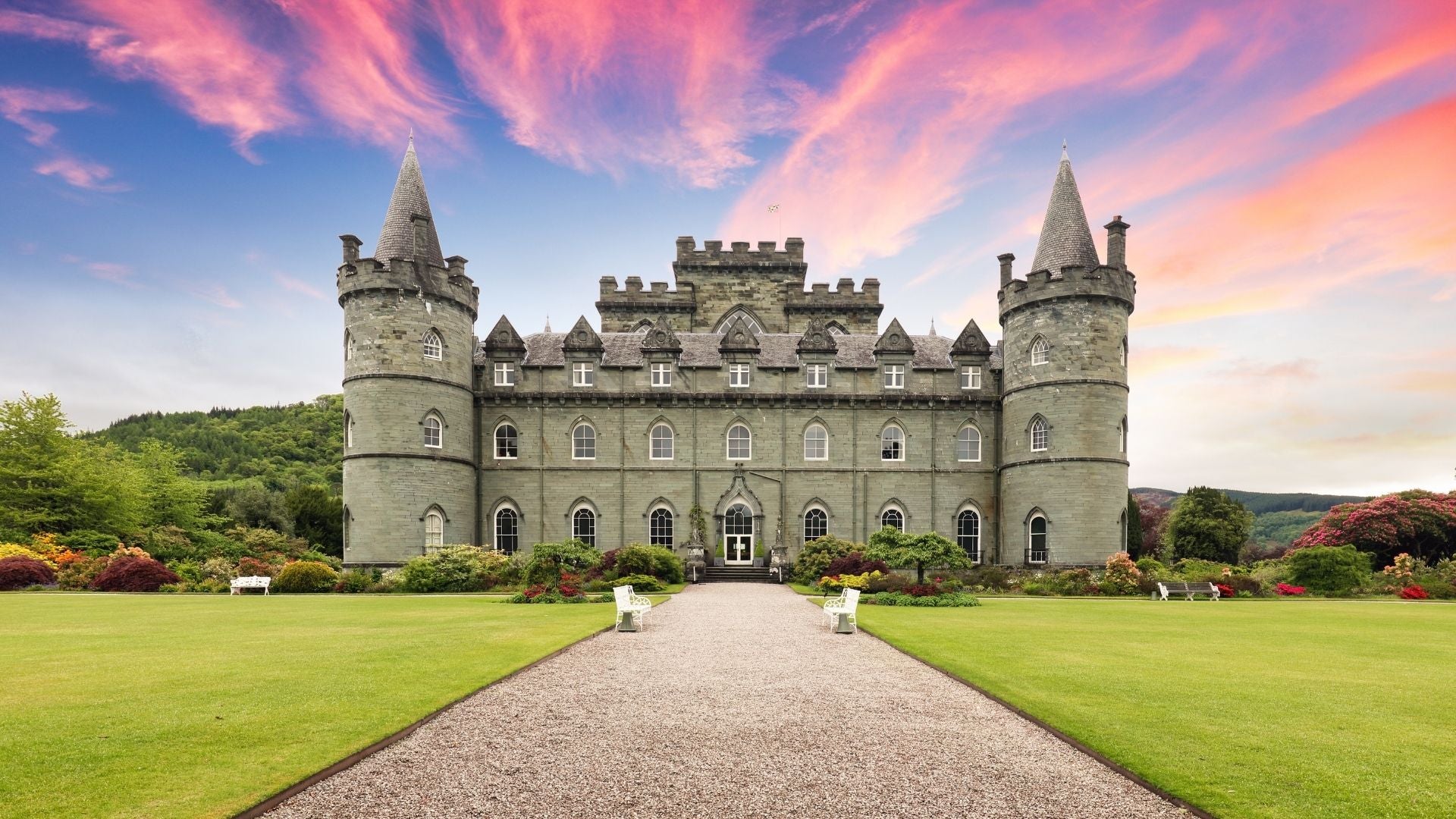
Additionally, thirty-six prominent members of the clan were hanged from a tree in the churchyard, later being buried together in a mass grave, whether dead or alive. Sir Colin Campbell, responsible for the Dunoon Massacre, was beheaded in 1661 after being found guilty of high treason.
E. In the 18th century
Clan Lamont faced significant challenges despite holding onto their lands. Surrounded by formidable Campbell strongholds in Cowal, they were practically isolated. This isolation prevented the predominantly Roman Catholic Lamonts from joining the Jacobite Risings of 1715 and 1745. By abstaining from these conflicts, the Lamonts avoided the severe repercussions that led to the downfall of many Highland clans after the Battle of Culloden in 1746. The British government's ban on bagpipes, tartans, and clan leaders impacted all Highland clans, regardless of their involvement in the uprisings, pushing the region into a period of decline and adaptation.
III. Clan Lamont Crest and Coat of Arms
A. Clan Lamont Crest
The combination of these symbols in the Clan Lamont crest not only honors the historical roots of the clan but also conveys enduring values such as readiness, resilience, and a connection to the fertile landscapes of their ancestral lands. The crest is a proud emblem, representing the identity and spirit of Clan Lamont's history across generations.
Gaelic Name: MacLaomainn
Crest: A dexter hand couped at the wrist, all Proper
Motto: Ne parcas nec spernas (Neither spare nor dispose)
Origin of Name: Norse, Lawman
Badge: Crab Apple Tree
Lands: Argyll and Cowal
Clan Chief: The Rev. Father Peter Lamont of That Ilk
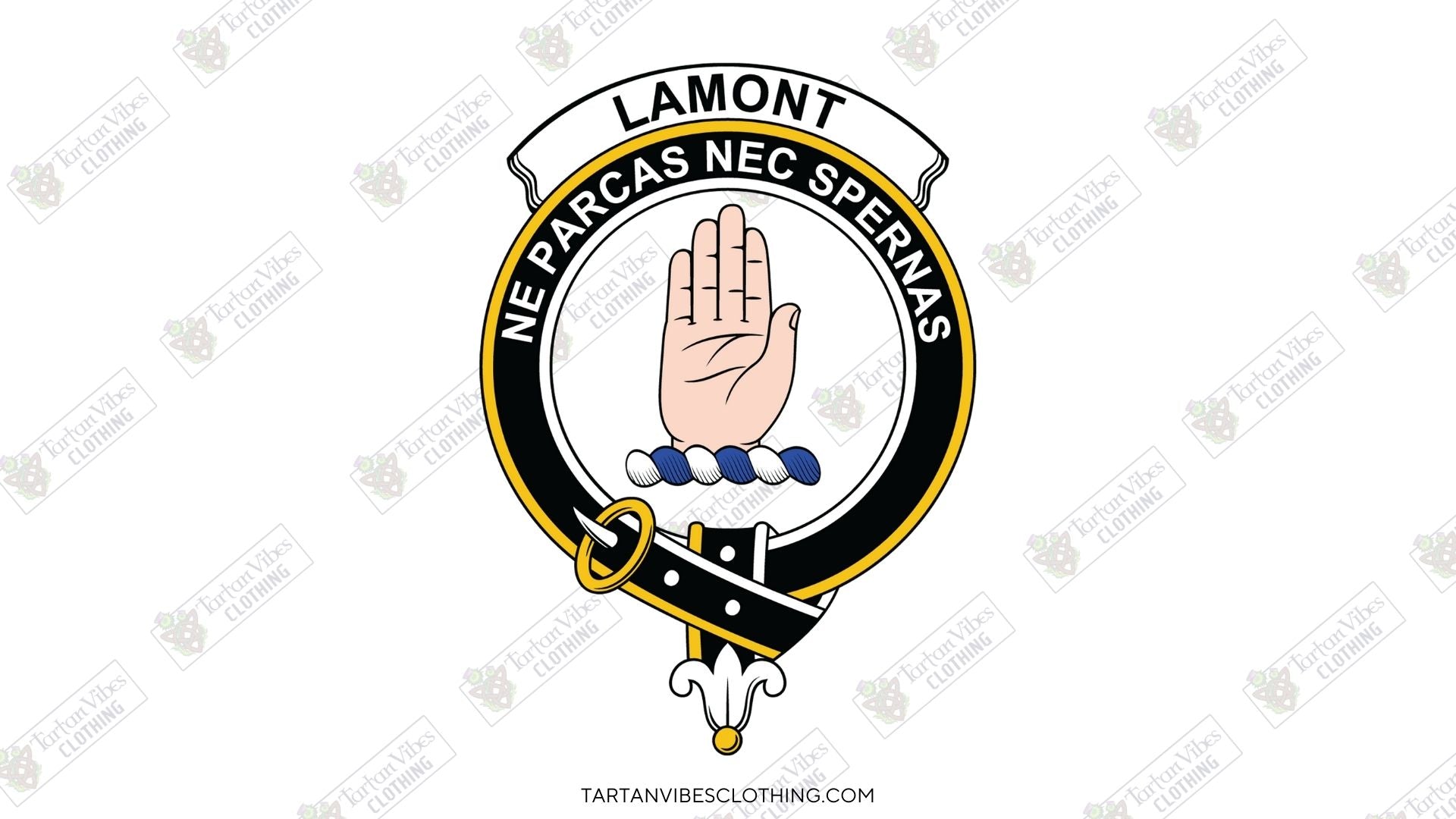
The Lamont Clan Crest features a distinctive emblem centered around a dexter hand couped at the wrist, symbolizing strength, unity, and heritage. The dexter hand, positioned prominently atop the crest, serves as a testament to the clan's ancestral legacy and its enduring commitment to its values and traditions.
Accompanied by the Lamont Crest, it is deeply rooted in the motto "Ne parcas nec spernas" (Neither spare nor dispose), which reflects the clan's unwavering commitment to defend its honor and uphold its values without hesitation. This motto serves as a guiding principle for members of the Lamont clan, emphasizing the importance of steadfastness and determination in the face of adversity.
Through its symbolism, the Lamont Crest inspires a sense of pride and unity among clan members, reminding them of their shared history and the values that bind them together. As a symbol of authority and lineage, it embodies the Lamont clan's proud heritage and noble spirit, instilling a sense of pride and kinship among its members for generations.
B. Clan Lamont Coat of Arms
The Clan Lamont Coat of Arms features a striking design with azure as the primary background color, symbolizing loyalty and strength. At the center of the coat of arms is a majestic lion rampant, depicted in argent representing purity and courage. The lion rampant, standing proudly with its forelegs raised, signifies the clan's valor and determination. This powerful emblem embodies the noble heritage and resilience of Clan Lamont, serving as a proud symbol of its identity and lineage.
IV. Clan Lamont Tartan
Every clan has multiple variations of its tartan, which can be quite bewildering for those unfamiliar with the system.
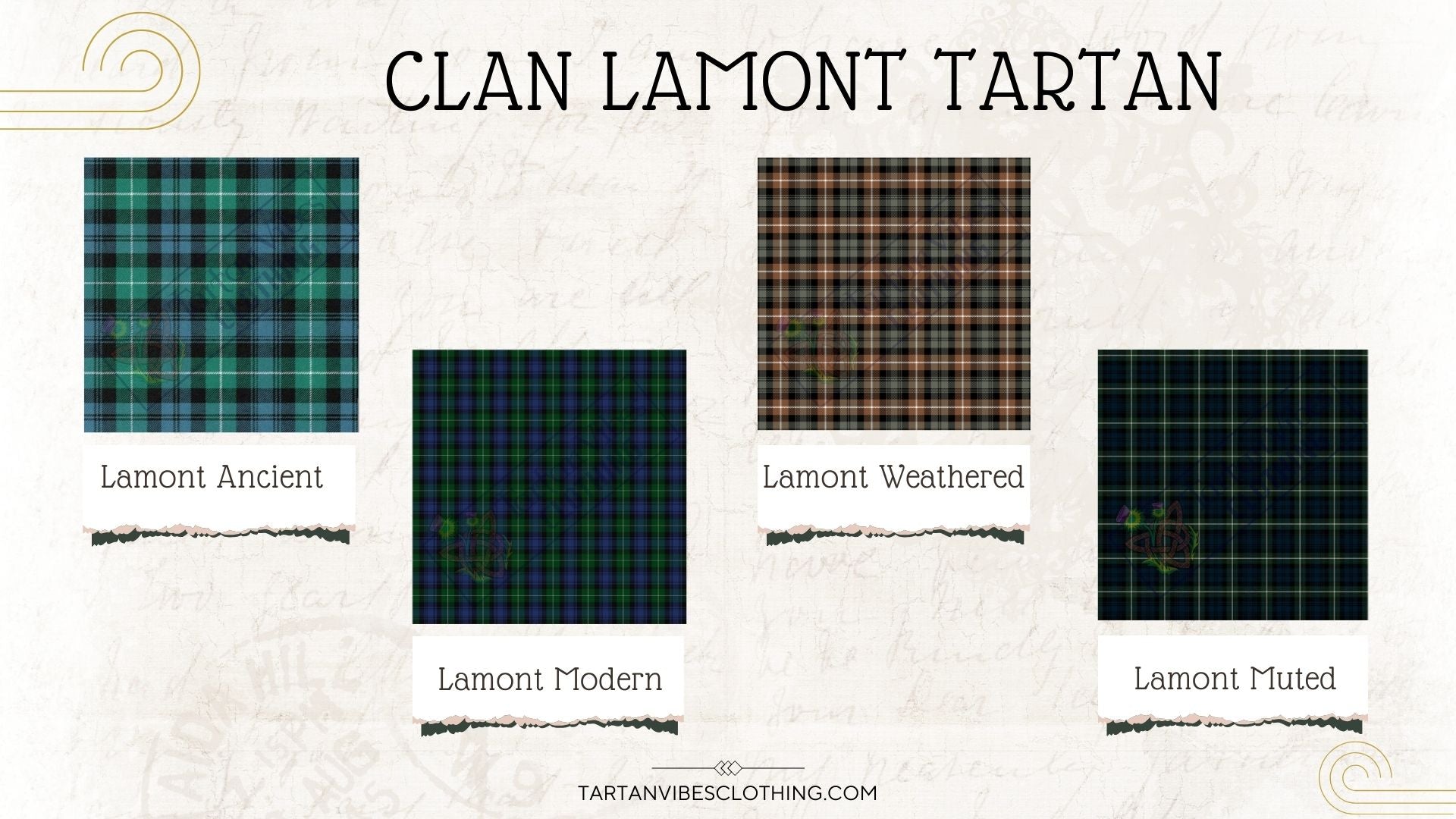
The Lamont Clan tartan is a traditional Scottish tartan associated with the Clan Lamont. Clan Lamont has a strong connection with Clan Campbell, and this bond is evident in the design of the Lamont tartan. Contrasting with the Campbell tartan, the Lamont tartan features white lines on green instead of green lines on white. The Clan Lamont tartan colors are navy blue, bottle green, black, and white. A piece of the Lamont tartan from approximately 1816, bearing the seal and signature of the clan chief, can be found in the Highland Society of London's collection.
Explore the timeless traditions of Clan Lamont through our collection of tartan products on our website. And bring a piece of the clan's history into your present.
V. Prominent Members of Clan Lamont
Prominent Clan Lamont leaders have made significant contributions across various fields, shaping the clan's history and legacy. Figures like Sir John Lamont, 14th Chief of Clan Lamont of Knockdow, ensured the clan's stability and prosperity through effective leadership and governance. Gaelic scholar, John Lamont enriched the clan's heritage by preserving and studying the Scottish Gaelic language and culture.
Norman Lamont, Baron Lamont of Lerwick, brought recognition to the Lamont name through his political career, serving as Chancellor of the Exchequer and making notable contributions to economic policy. Architect Sir Norman Lamont left a lasting impact on Scotland's built environment, contributing to the clan's legacy through his architectural designs.

Additionally, as recognized Chief of the clan, Rev. Fr. Peter Noel Lamont of that Ilk has worked tirelessly to uphold Lamont traditions and foster a sense of unity among clan members. These leaders, among others, have left indelible marks on the history and heritage of Clan Lamont, ensuring its legacy endures for generations to come.
VI. Conclusion
In conclusion, Clan Lamont stands as a testament to resilience, unity, and enduring heritage. Throughout its rich history, the clan has been shaped by the leadership and contributions of notable figures across various fields, from governance and scholarship to politics and architecture. The legacy of Clan Lamont is one of strength and tradition, upheld by leaders who have worked tirelessly to preserve its heritage and promote a sense of kinship among its members.
As recognized custodians of a proud lineage, Clan Lamont continues to inspire pride and camaraderie, ensuring that its name and values endure for generations. In an ever-changing world, the spirit of Clan Lamont remains a beacon of unity and pride, guiding its members forward with a sense of purpose and belonging.
Frequently Asked Questions
Where is Clan Lamont from in Scotland?
Cowal peninsula
Clan Lamont ruled almost all of the Cowal Peninsula in Argyll for centuries. However, their standing was damaged by the Dunoon Massacre in 1646, when the rival Campbells killed 200 Lamont clansmen.
Who is the head of the Lamont clan?
The present Chief of the clan is Peter Noel Lamont of that Ilk, Chief of the Name and Arms of Lamont, who is a member of the Standing Council of Scottish Chiefs. The current Chief is a parish priest in Marayong (a suburb of Sydney), Australia.
What is the Lamont clan's motto?
The Lamont clan motto is "Ne Parcas nec Spernas" (Neither spare nor despise), and the clan crest is a raised hand.
What is the significance of the Lamont Clan Crest?
The Lamont Clan Crest features a dexter hand couped at the wrist, symbolizing strength and unity. This emblem is a proud symbol of the clan's heritage and identity.
What are some notable landmarks or sites associated with Clan Lamont?
The ancestral seat of Clan Lamont is Toward Castle (Clan Lamont castle), located in Argyll and Bute, Scotland. Other significant sites include the Lamont Mausoleum in Kilfinan and various Lamont burial grounds throughout Scotland. You can refer to it here: tartanvibesclothing.com











